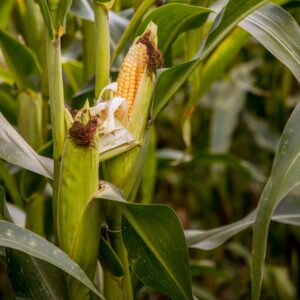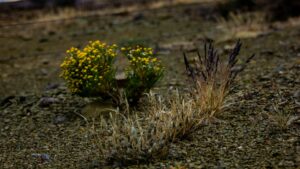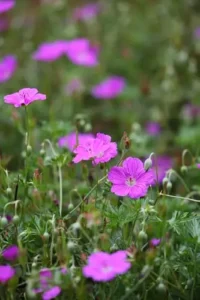
Jackie Zondo is clear on one point: “Everything you see is an initiative of the community”.
The point is discussed in several places – how a community must be included in whatever has to do with them. In our Boreholes & windmills chapter, for example, a role player discussing water supply systems for communities calls this the “most important … and most neglected part of the installation process”. Participation is meant to be the bedrock of democracy (see discussion in a later blog in this series). It is certainly central to any understanding of a co-operative, and EarthRise’s venture with the Naledi Village Farmers’ Co-op has shown a keen appreciation of this: we understand that the community has been involved in every step.
Morning breaks over the conference centre where a baker from Ficksburg is presenting training in baking technology
Stones are used to keep roofs down. In the event of having to relocate, the roofs can be used again and will not have been pierced by nails. Transferring ownership of some ground to the community itself has ensured security of tenure.
Jackie speaks much of community buy-in. She refers to the first ever Harvest Festival which had been held the previous weekend, a vindication of all the efforts so far, and of the intention to drive their own destiny.
We arrive at the Naledi Village Farmer’s Co-op office. In the distance, cattle belonging to the co-operative are grazing the left overs from the harvested sugar beans [also called “dry beans”]. At the Harvest Festival, beans were handed out to all co-operative members as well as attendees, including neighbouring commercial farmers.
The co-op grows vegetables including beetroot, spinach, tomatoes and butternut. The vegetables were the crops that made the initial splash (covered in Jay Naidoo’s book Change) and gave the community its first glimpse of what could lie ahead. Inside the office we would later see evidence of some adding-value activities like jam.
The skeletons of buildings razed by the fire years ago are in evidence. We walk through them and come to a place where experimentation has been done with different construction methods. We will be meeting the brick making enterprise later – all part of creating a local economy.
Sifting sand for brick making. The other two ingredients, river sand and cement, are sourced from outside the farm.
Bricks made on the farm. They have an interlocking design, lessening the need for cement.
Rustler’s is seen as a “safe space where ideas are tested”, a “learning space”. Behind the lodge, we are told, there is a home built from cut aways of wood. The ideal is to have a local community team, competent to attend to the building of new structures and taking care of the old. There is other farm infrastructure like roads which will require attention. The possibility of creating a local maintenance company is posited.
In the courtyard outside the co-op’s offices we are introduced to Jim, who builds and repairs furniture. He was loading a table on a bakkie for delivery. Also to be seen in the courtyard were two diesel tanks. The price of fuel was to drop the following week, and there were plans to top-up the tanks then.
We walked around to the front where we met Byron Maclean and Soozie van der Linde.





